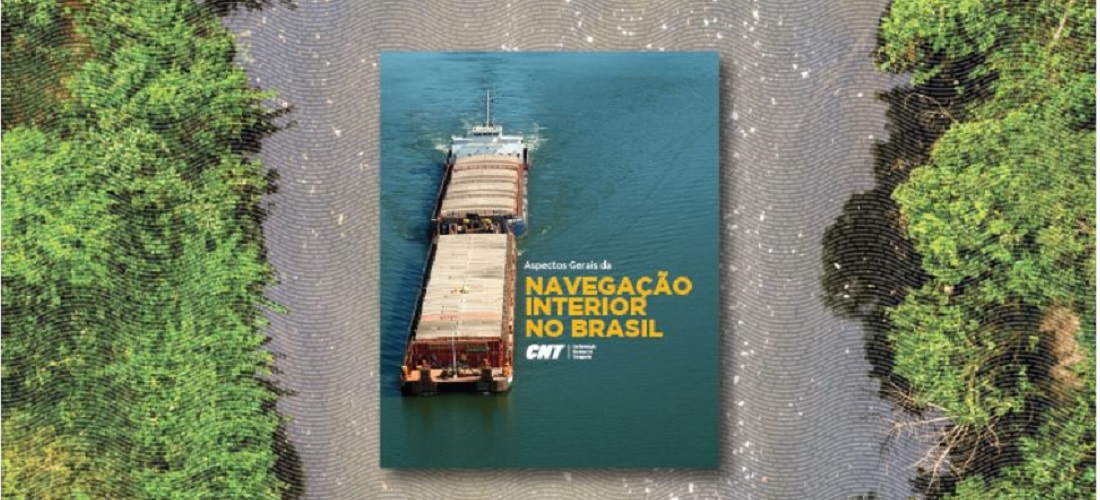
Brazil wastes two thirds of its waterway potential
Oct, 02, 2019 Posted by Sylvia SchandertWeek 201941
Brazil wastes enormous waterway potential by underutilizing navigable rivers from its 12 hydrographic regions. Of the 63,000 kilometers that could currently be used, practically two thirds are not. Waterway transportation in the country makes commercial use (for cargo and passengers) of only 19,500 km (30.9%) of the network.
There is a lot of bureaucracy, excessive standards and a lack of standardized, more robust legislation. The numbers shown in this new study by CNT, General Aspects of Inland Navigation in Brazil, show that, over decades, the measures adopted did not contribute to the development of this mode.
The CNT study brings a characterization of the sector and presents its history. It also analyzes normative, institutional scenarios and government plans and programs. This will be the first in a series of special journals prepared by the Confederation that will address the country’s waterway system.
From 1907 to 2019, for example, the sector underwent more than 20 changes in its management. On average, it was a change every five years. Currently, in the institutional framework of inland navigation, there are more than ten entities with a central role, only at the federal level.
In addition, resources have not been sufficient to ensure greater service delivery and better quality infrastructure. From 2001 to 2018, the maximum amount was invested in 2009: R$831.79m. But from 2009 to 2018, there was a significant drop, and the investments actually made decreased by almost 80%, reaching R$173.70m (in 2018). The latest CNT Transport and Logistics Plan indicates that the minimum investment required for inland navigation in Brazil corresponds to R$166.4bn in 367 projects.
Despite wasted opportunities, Brazilian rivers have shown their potential to develop the country’s economy. From 2010 to 2018, the volume of cargo carried by the waterway increased 34.8%, from 75.3m tons to about 101.5m tons per year.
Highlights
• Brazil has 63,000 km of rivers with potential for navigation, but only uses 19,500 km (30.9%). Two thirds of this potential is not used
• Brazil does not have waterways yet, only naturally navigable rivers
• River use accounts for 20% of China and half of US use
• Mesh used was reduced by 7.1% in extension compared to 2010/2011
• Amazon Hydrographic Region has 16,000 km of navigable length (82.5% of the total navigable in the country). The Tocantins/Araguaia River Basin Region is approximately 1,400 km (about 7% of the total length).
• In the Amazon Hydrographic Region, almost 10m passengers are transported per year.
• In 8 years, cargo transportation by waterway grew 34.8% in Brazil
• A 4-barge convoy is capable of carrying a load equivalent to 2.9 railway compositions of approximately 30 wagons each or 172 trucks.
• There have been more than 20 management-related changes since 1907 – one change every five years on average. This undermines the stability of regulation and the development of the sector.
• Legislation failures are also obstacles
• Effective investments in waterways represent, on average, half of the resources committed between 2001 and 2018.
• Only 10.6% of the estimated average amount was invested in the sector’s plans and programs (between 2011 and 2018).
• In 2018, R$173.70m was invested in inland navigation. The latest edition of the CNT Transport and Logistics Plan estimates that the sector needs R$166.4bn.
-
Trade Regulations
Nov, 30, 2023
0
Brazil celebrates newly opened markets in Colombia and Japan
-
Shipping
Mar, 11, 2022
0
Cargo handling reaches 88.5 million tonnes throughout ports
-
Meat
Jan, 14, 2022
0
Brazil’s BRF, Saudi investment fund sign MOU
-
Shipping
Nov, 04, 2021
0
Wilson Sons invests in the port support market for the oil and gas industry

